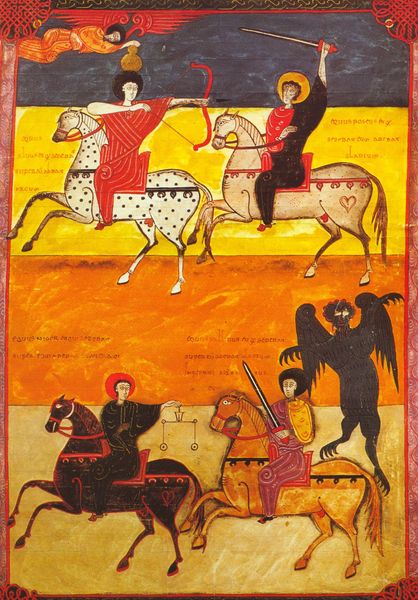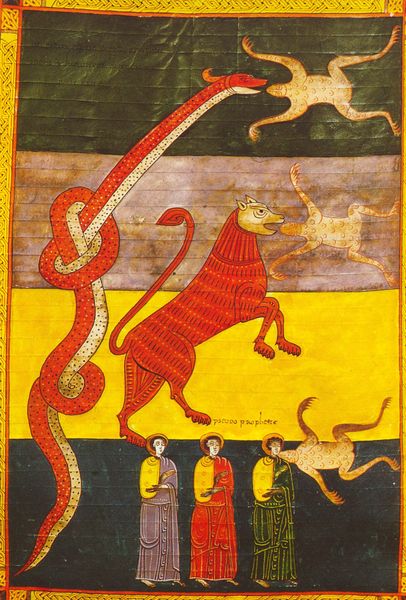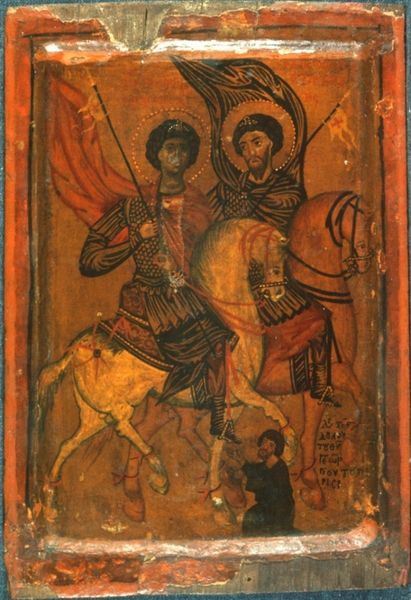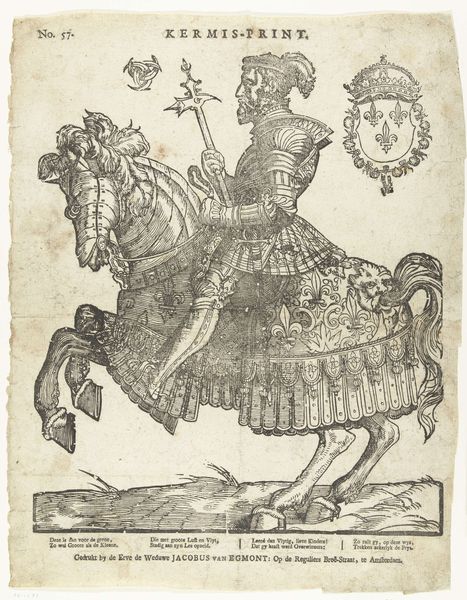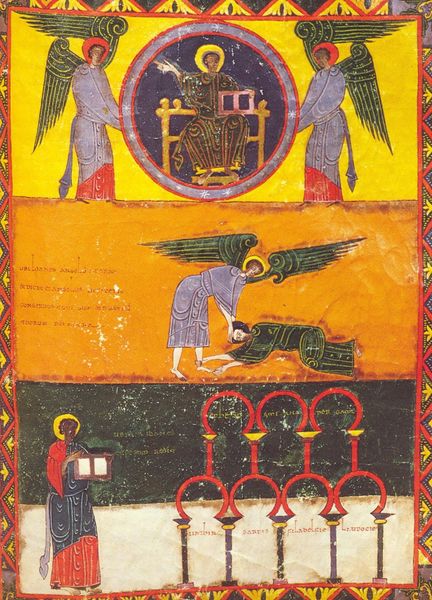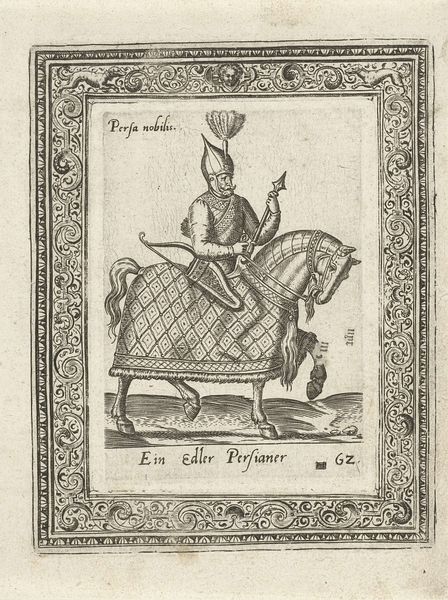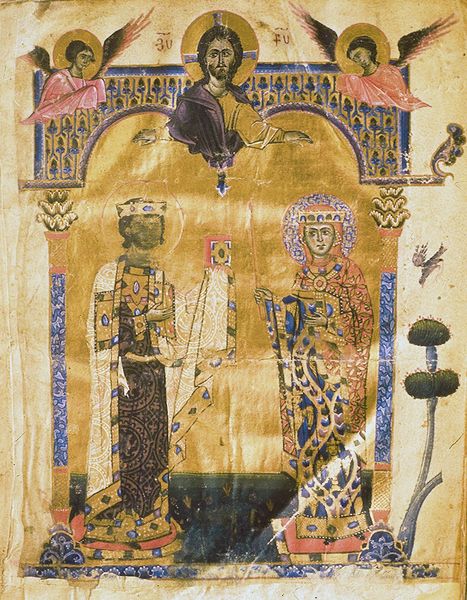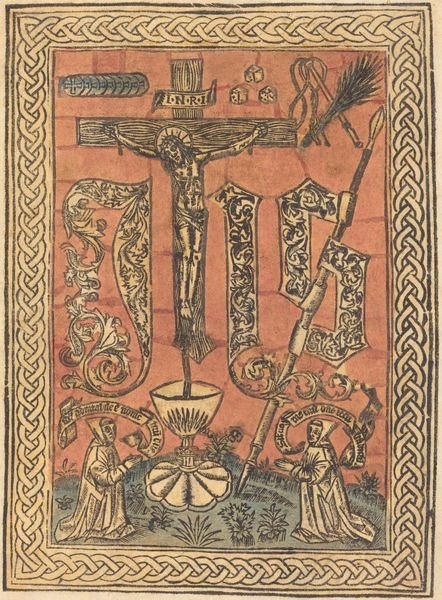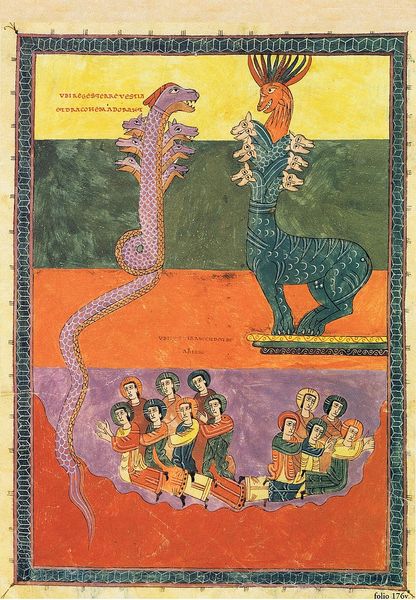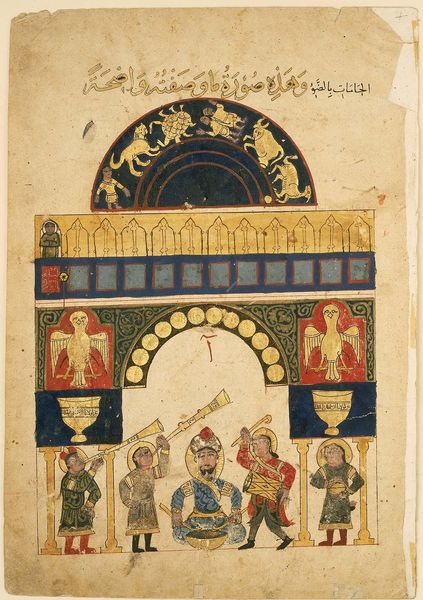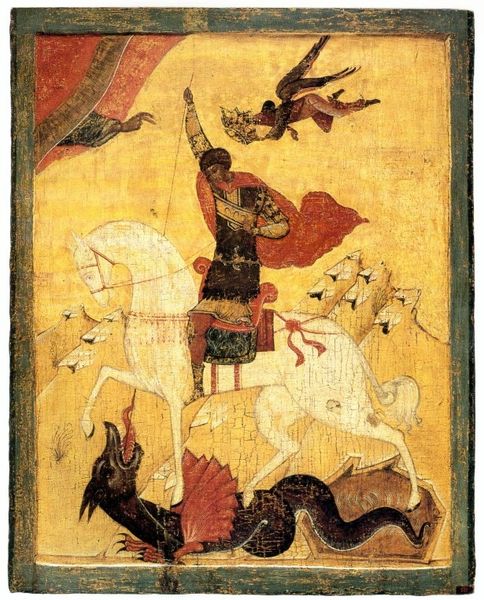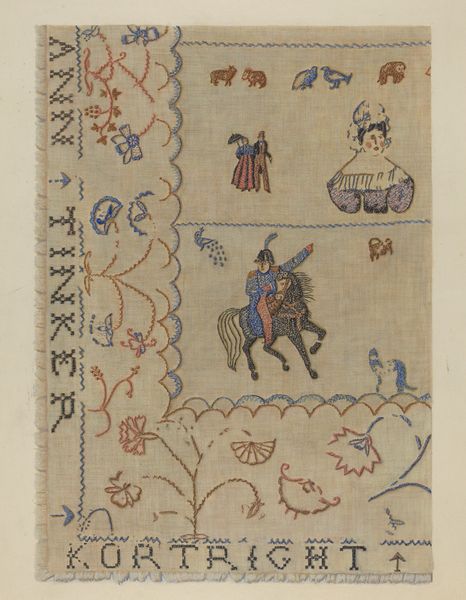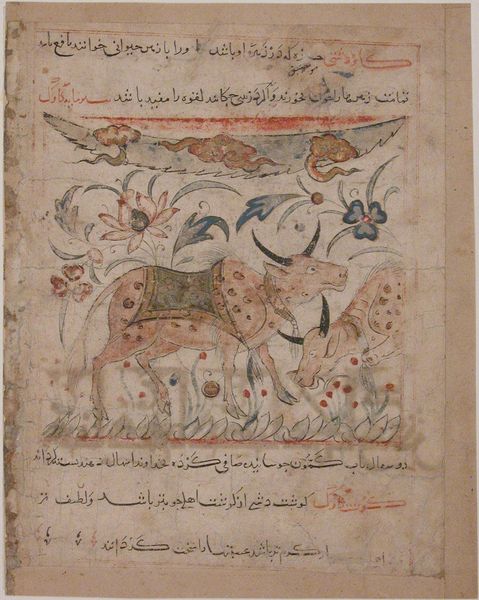
painting, watercolor
#
medieval
#
narrative-art
#
painting
#
figuration
#
text
#
watercolor
#
coloured pencil
#
mixed media
Copyright: Public domain
Editor: Here we have "The Rider Defeating the Snake," created around 975 by Ende, rendered in watercolor and other media. The flatness of the figures and the intense colors give it a very decorative feel. What story do you think this image is trying to tell? Curator: Well, this miniature, like many from the medieval period, wasn’t just created in a vacuum. Its production was very deliberate and served a specific function within the social and religious landscape of its time. Consider the role of the illuminated manuscript. Who would have been the patrons? What were they trying to convey through imagery like this triumphant rider? Editor: So, this wasn't just about artistic expression but also about power dynamics? Curator: Absolutely. The church, the monarchy – they utilized art to project authority and reinforce dominant ideologies. Think about the symbolism inherent in the rider vanquishing the snake. Is this a straightforward depiction of good versus evil? And how might this imagery have resonated with audiences in the tenth century, shaped as they were by religious teaching and societal expectations? Does it seem like this could reinforce those societal beliefs? Editor: I see what you mean. The imagery could be interpreted in many ways, but ultimately the social and political context gives us some much needed clues. It’s fascinating to consider art in terms of power, not just aesthetics. Curator: Exactly. It is important to ask, Whose story is being told, and who is controlling the narrative through these artistic representations? It's important to also note who gets to create those pieces and distribute the narrative within them. Editor: Thanks, this really opened my eyes to a new perspective.
Comments
No comments
Be the first to comment and join the conversation on the ultimate creative platform.
